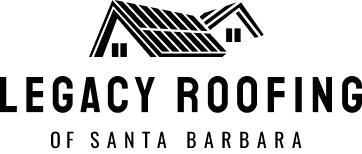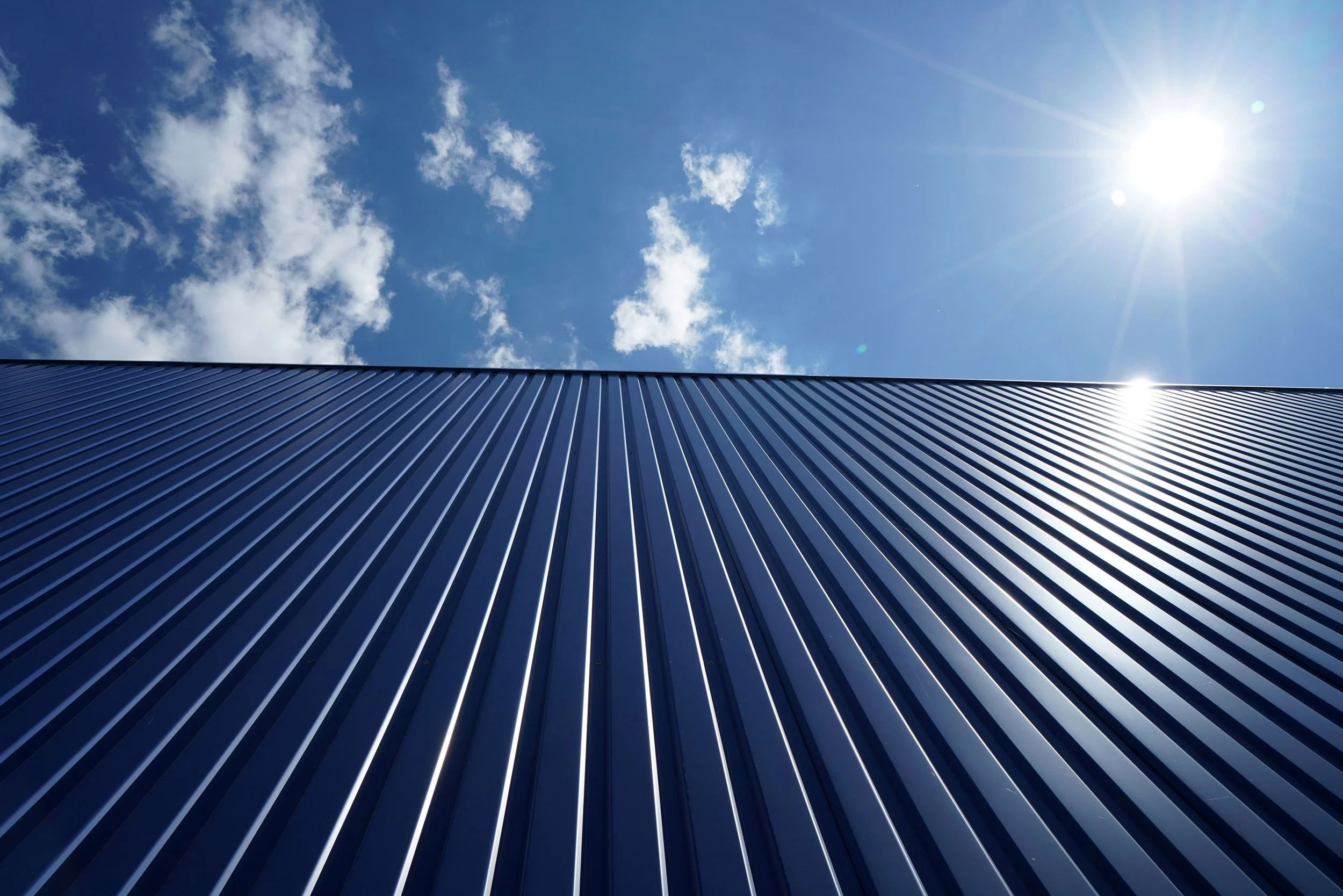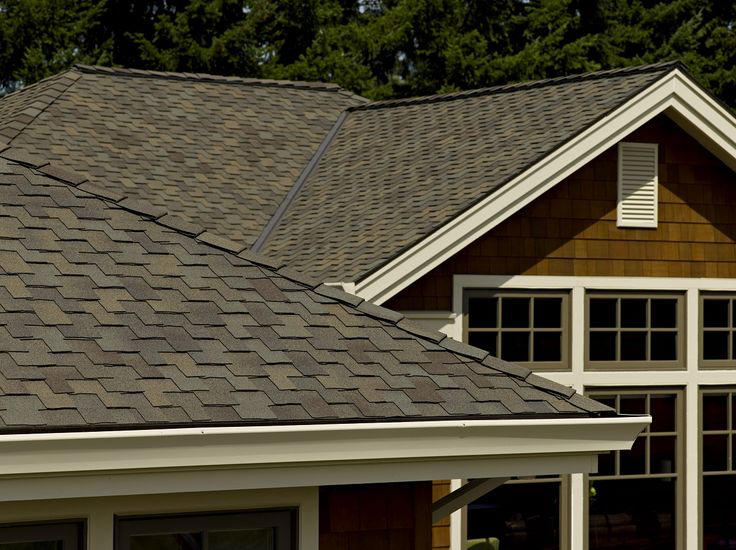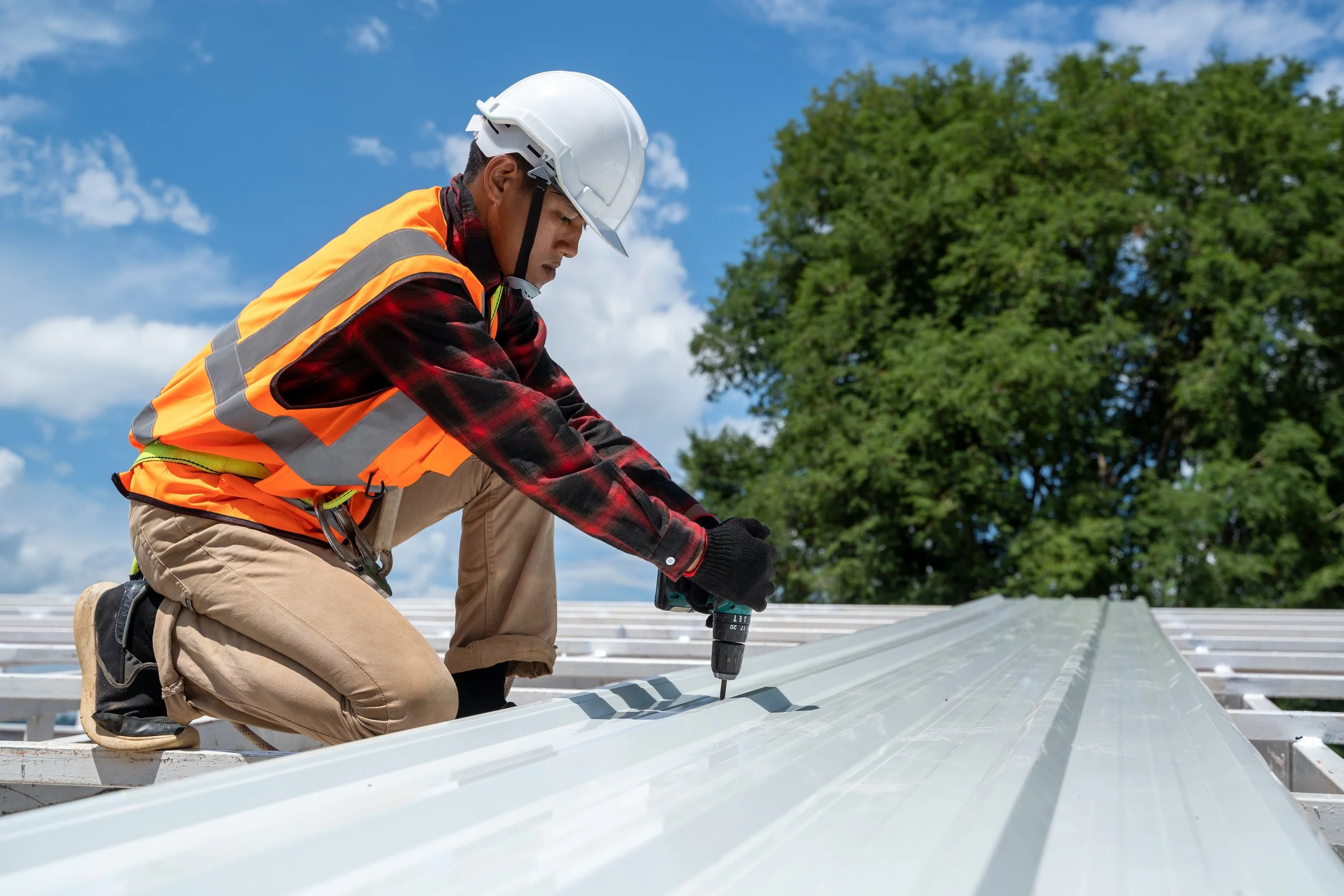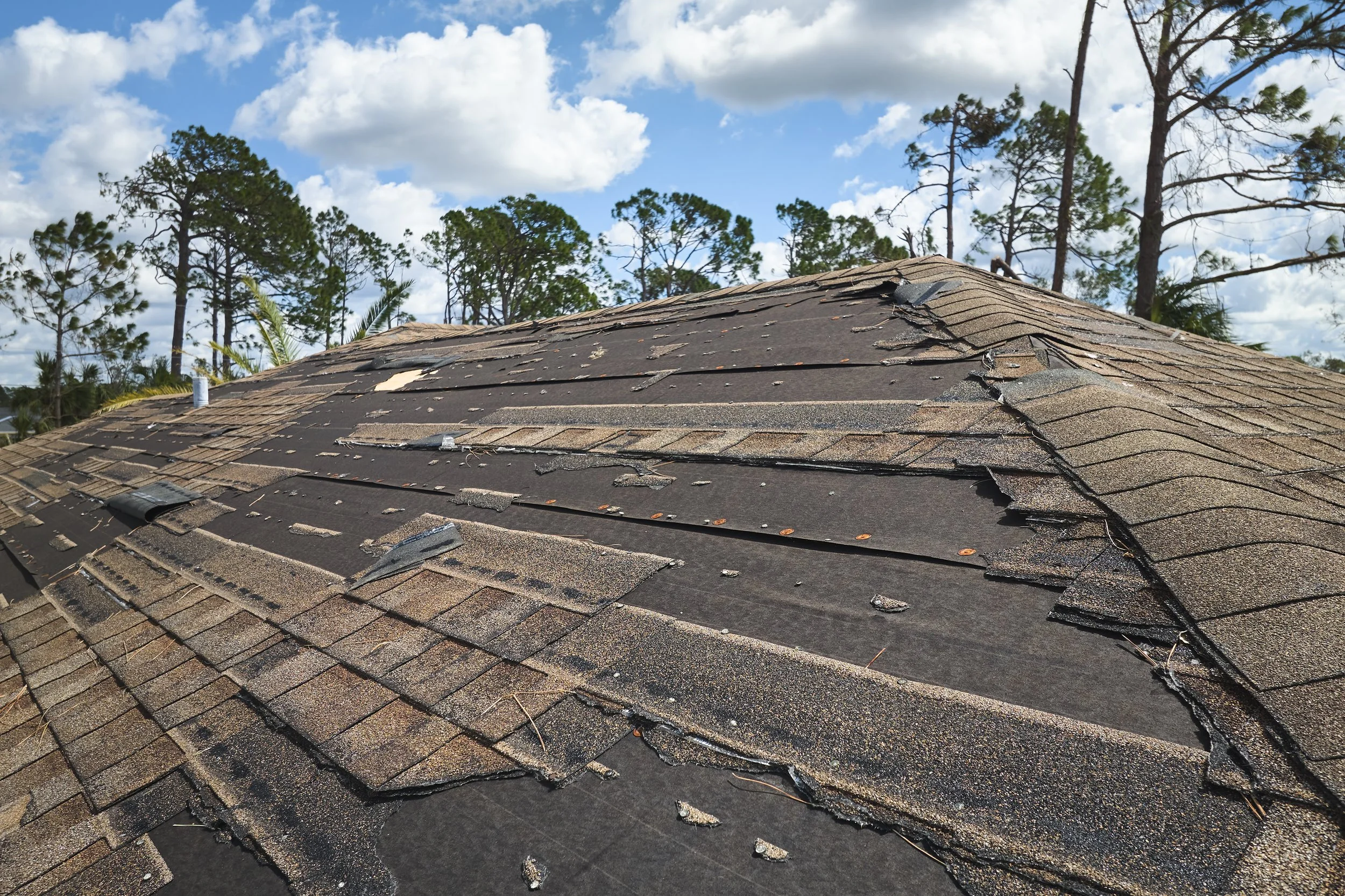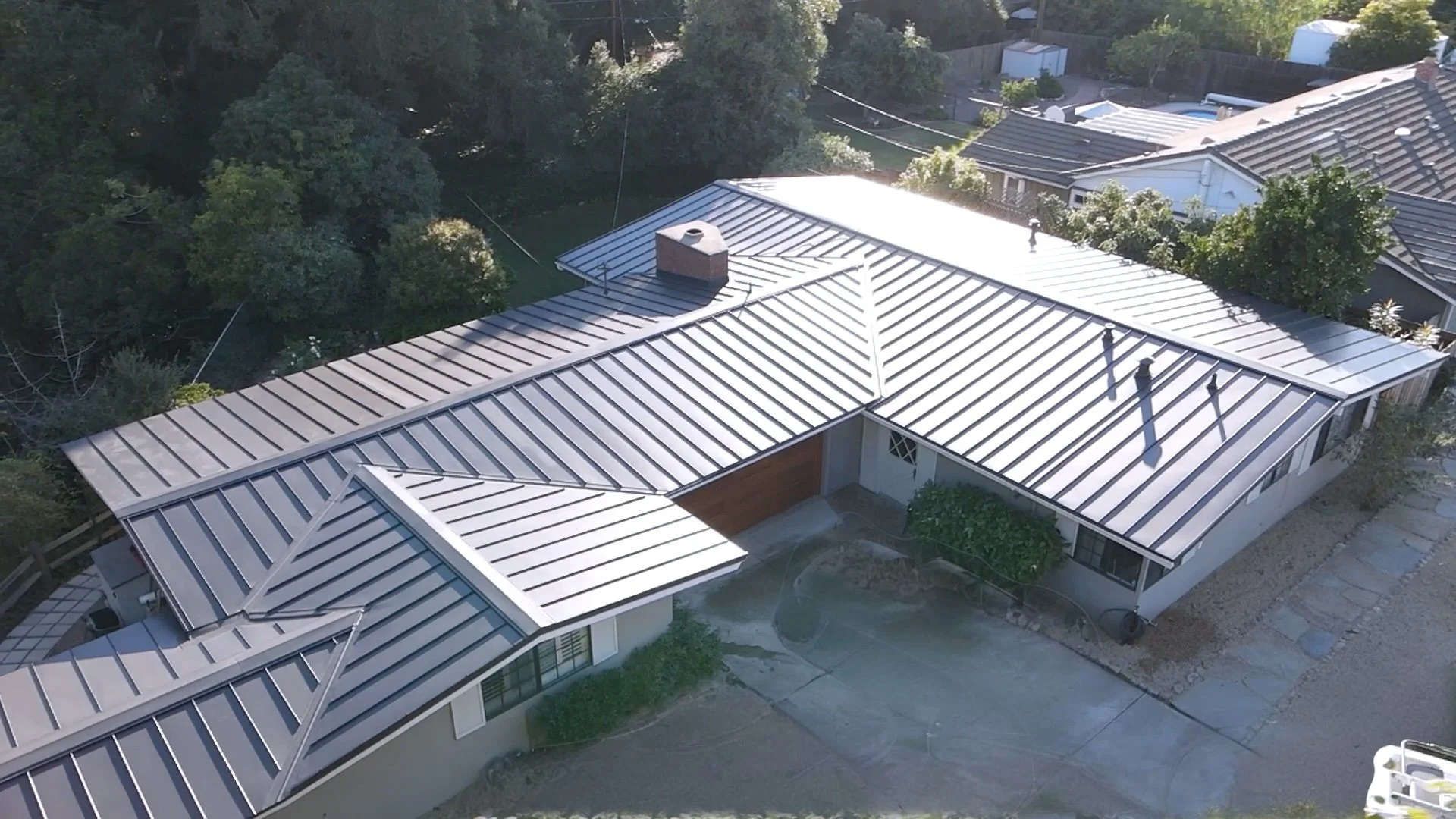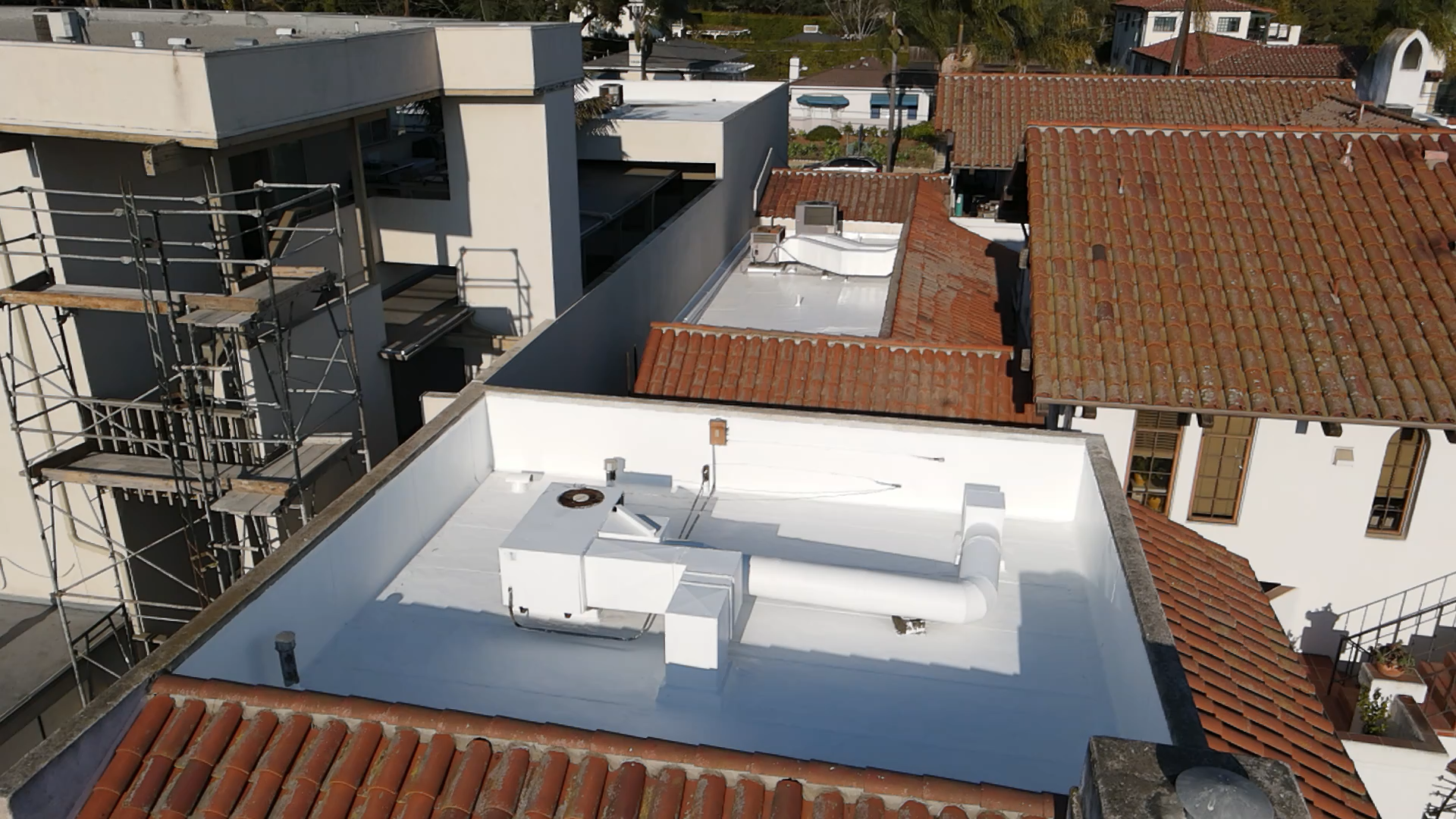Metal Roof vs. Shingles: Which Roofing Investment is Right for Your Home?
Metal Roof vs. Shingles Introduction
Replacing your roof is undoubtedly one of the most critical decisions a homeowner faces, and the debate often centers on metal versus asphalt shingles. These two options represent fundamentally different approaches to protecting your home: asphalt shingles are a widely used and affordable choice, while metal roofing is valued for its exceptional longevity, durability, and high performance. Although the initial cost difference can be substantial, the long-term investment profile of each material is an important consideration. The "best" choice is never universal—it depends entirely on your specific budget, local climate, and ownership timeline. This comprehensive guide will analyze the critical factors involved so you can confidently determine which material provides the right value for your unique circumstances.
Table of Contents
- Metal Roof vs. Shingles at a Glance
- Key Trade-offs Between Options
- Feature Comparison: Performance and Resilience
- Feature Comparison: Aesthetics and Material Types
- Cost Analysis: Investment and Value
- Installation and Maintenance Comparison
- Hidden Performance Factors
- Insurance and Risk Considerations
- Who Should Choose What
- Making the Right Decision for Your Needs
- Legacy Roofing of Santa Barbara Can Help
- Final Thoughts & Next Steps
Metal Roof vs. Shingles at a Glance
| Factor | Metal Roof | Asphalt Shingles | Advantage |
|---|---|---|---|
| Estimated Lifespan | ⭐⭐⭐⭐⭐ (40+ years) | ⭐⭐⭐ (Typically 20-30 years) | Metal |
| Initial Price | ⭐⭐ (High upfront cost) | ⭐⭐⭐⭐⭐ (Low initial cost) | Shingles |
| Durability / Weather Resilience | ⭐⭐⭐⭐⭐ (Class A fire rating, highly resistant) | ⭐⭐⭐ (Good protection, susceptible to granular loss over time) | Metal |
| Installation Complexity | ⭐⭐ (Requires specialized contractor and training) | ⭐⭐⭐⭐ (Wider contractor availability) | Shingles |
| Price Range | High-end: $30,000–$40,000+ for replacement | Substantially lower than metal. $20,000-$30,000+ for replacement | Shingles |
| Best For | Long-term homeowners, high-exposure climates, maximizing ROI | Budget-conscious homeowners, short-term ownership | Depends on needs |
Key Trade-offs Between Options
Choosing a roofing material means weighing crucial trade-offs, often pitting immediate cost against long-term performance.
Initial Cost vs. Total Cost of Ownership
Metal Roof: Requires a significantly higher initial investment. However, the Metal Construction Association highlights that metal construction offers cost efficiencies over its lifespan. Because metal lasts for 40 years or more, it avoids multiple replacement cycles required by shingles, leading to a much lower total cost of ownership.
Asphalt Shingles: Offer a low initial price point, making them accessible for most homeowners. The challenge is that homeowners must factor in replacement roof costs, which may occur two or three times over the lifespan of a single quality metal roof.
Raw Lifespan vs. Replacement Frequency
Metal Roof: Metal is often described as the building material of choice that lasts for generations. Quality metal roofs can last over 40 years, providing exceptional longevity.
Asphalt Shingles: While modern architectural shingles are durable, their lifespan is generally 20 to 30 years. This shorter longevity means more frequent material tear-offs and replacements, incurring higher accumulated costs and hassles.
Installation Expertise vs. Contractor Availability
Metal Roof: The installation of systems, such as standing seam metal roofing, demands specialized skills and precision. Homeowners must seek out expert metal roof contractors.
Asphalt Shingles: Since shingles are the most common roofing material, finding a contractor is generally easier, as there is a broader pool of installers. However, industry leaders emphasize that homeowners should verify contractor certification to ensure proper installation and warranty access.
Feature Comparison: Performance and Resilience
This section details how each roof holds up against severe weather, fire, and the stresses of time.
Metal Roof: Strengths in Resilience
Metal roofs are structurally tough and highly reliable. They are recognized for their lasting resilience and high performance, meeting both architectural and functional needs. A key safety feature is the Class A fire rating, which confirms metal roofs are among the most fire-resistant products available on the market. Furthermore, metal's inherent durability makes it less susceptible to failure than materials that degrade quickly. Metal roofs also perform well against hail, storms, and high winds.
Asphalt Shingles: Capabilities and Limitations
Leading manufacturers offer asphalt shingle systems built for resilience, focusing heavily on resistance to storm damage. Shingle systems include components and accessories designed to help protect against hail damage. The industry is working to build a more resilient future through initiatives like the FORTIFIED Roof™ alliance, which aims to improve weather resistance. However, over time, standard asphalt shingles are inherently vulnerable to wear mechanisms like granular loss, curling, and cracking, which reduces their effectiveness and longevity.
The verdict: Metal roofing offers superior long-term resilience and is highly advantageous in extreme climates. Its Class A fire rating and 40+ year lifespan make it a long-term risk management solution. While high-impact shingles offer specific storm protection, they cannot match metal's generational longevity.
Feature Comparison: Aesthetics and Material Types
A roofing material contributes significantly to a home's visual appeal.
Metal Roof: Diverse Materials and Modern Appeal
Modern metal roofing provides extensive design flexibility and are available in a variety of styles, including:
Standing seam metal roofing
Steep slope metal roofing
Low slope metal roofing
Metal roofing that can be stamped or styled to look like shake shingles
Metal offers a vast color palette, often available in as many as 27 finishes and colors.
Asphalt Shingles: Classic Look and Design Flexibility
Asphalt shingles remain the dominant choice for homeowners who prefer a classic, familiar appearance. Manufacturers emphasize the beauty, color, and design of their shingles. Homeowners frequently appreciate the shadowing effect created by the style of certain shingle lines—the dimensional depth that occurs when multi-layered architectural shingles create natural-looking shadows and texture. This three-dimensional appearance mimics the look of traditional wood shake or slate roofs, adding visual interest and curb appeal to the home. Shingle varieties include:
Architectural shingles
Composite shingles
Standard asphalt shingles
The verdict: Shingles offer traditional, widely accepted aesthetics and provide excellent design and color choices. However, metal offers high durability in its finishes and superior versatility for achieving long-lasting, modern, or bold architectural designs.
Cost Analysis: Investment and Value
Roofing is a long-term investment, and understanding the financial implications beyond the initial bid is critical.
Initial Investment
Asphalt shingles offer a significant advantage here, as their upfront material and labor costs are lower than metal.
Metal Roof: The initial investment for a high-quality metal roof replacement can be substantial, with many clients expecting costs in the range of $30,000–$40,000+. This reflects the cost of premium materials and specialized installation expertise.
Asphalt Shingles: The price is generally substantially lower than metal in the range of $20,000-$30,000, making it the choice for budget-constrained projects.
Long-term Costs
When evaluating the total cost of ownership, metal quickly gains a financial advantage.
Metal Roof: Due to its superior longevity (40+ years) and low maintenance, replacement costs are avoided for decades. The Metal Construction Association emphasizes the cost efficiencies associated with metal construction, confirming its long-term financial benefit.
Asphalt Shingles: The total cost of ownership is inflated by recurring replacement roof costs. Since shingles may need replacing (20 to 30 years) two or three times over the lifespan of one metal roof, the cumulative cost often exceeds the initial savings.
Value Considerations
High-quality roofing positively impacts property value and marketability. The Journal of Light Construction publishes an annual Cost vs. Value Report that estimates renovation returns on investment, based in large part on real estate professional speculation about resale values. According to their 2024 national averages, asphalt shingle replacement recoups 56.9% of its cost in resale value, while metal roofing recoups 48.1%.
However, these figures focus on perceived resale value rather than long-term ownership costs. A metal roof eliminates the need for future replacements during ownership. When a buyer purchases a home with a metal roof, they gain a roof that will likely outlast their ownership, whereas an asphalt shingle roof may require replacement within 20-30 years.
The bottom line: If maximizing perceived resale value is your priority, shingles show better cost recovery. However, for homeowners staying 20 years or more, metal's elimination of replacement costs provides better total cost of ownership despite lower resale value estimates.
The bottom line:
The resale value recovery percentages are relatively close (56.9% vs 48.1%), making it less clear-cut than it initially appears. If your home takes years to sell, or if you end up staying longer than planned, metal's 40+ year lifespan means you avoid a costly roof replacement that shingle owners will face. The "better" financial choice depends on your actual timeline—which is often unpredictable.
Installation and Maintenance Comparison
This section addresses the practical realities of setting up and taking care of the roof.
Metal Roof: Specialized Skill and Low Maintenance
Installation: The process of installing a metal roof requires precision and trained contractors. Metal is lightweight, so structural reinforcements are rarely needed for installation. Homeowners must ensure they work with a reputable installer.
Maintenance: Once correctly installed, metal roofs are inherently low maintenance. The Metal Construction Association lists low maintenance as a benefit of metal construction. Upkeep generally involves simple inspections rather than frequent repairs.
Asphalt Shingles: Simple Installation and Higher Maintenance
Installation: Shingles can be installed by a wider array of general contractors, which often simplifies the process of finding labor. Industry leaders stress the importance of verifying contractor certification to ensure quality work and warranty compliance. Questions often arise about installing metal over shingles, a technique sometimes used to save on tear-off costs. We recommend against this in our blog post “Can you put a metal roof over shingles?”
Maintenance: Shingles require more ongoing upkeep. They are susceptible to decay, granular loss, and curling, requiring monitoring for repair needs over time.
Bottom line: Metal roofing is the winner for long-term ease of ownership due to its low maintenance requirements. Shingles are easier to source for installation but demand more upkeep throughout their shorter service life.
Hidden Performance Factors
Beyond obvious traits like cost and appearance, these materials differ significantly in thermal performance and environmental contribution.
Metal Roof: Efficiency and Sustainability Champions
Energy Efficiency: Metal roofs are highly beneficial for managing climate control. The Metal Construction Association lists energy efficiency as a key benefit of metal walls and roofs. Metal is naturally reflective, meaning light-colored or specially coated panels can reflect solar heat away from the home, significantly lowering cooling costs.
Environmental Impact: Metal is superior in sustainability. The Metal Construction Association reports that steel, the most common metal roofing material, has an annual recycling rate exceeding 70%, with recovery rates near 90% (metal roofing and recycling data). In stark contrast, the Environmental Protection Agency estimates that 11-13 million tons of asphalt shingles are removed from roofs annually in the U.S., with less than 10% recycled and over 90% ending up in landfills (shingles and sustainability). From that information, we are confident in saying metal roofing is significantly more recyclable than asphalt shingles.
Noise Levels: Noise is a common homeowner concern with metal roofs during heavy rain or hail. Yet, as mentioned previously, noise isn’t really an issue with metal roofs. According to McElroy Metal, the Acoustic Group at the University of Lulea, Sweden found that rain on asphalt shingles measures about 46 decibels (dBA) compared to rain on a metal roof at 52 dBA. Rain seems to be louder on metal roofs in general, but doesn’t seem to be noticeable. The key is proper installation—modern residential metal roofs are constructed with solid decking, underlayment, and insulation, which together dampen sound. Metal roofs on structures lacking these components (like barns or sheds) are indeed louder, but residential metal roofs with a complete roof assembly are comparable in noise levels to asphalt shingles.
Asphalt Shingles: Limitations in Efficiency and Waste
Energy Efficiency: Standard asphalt shingles tend to absorb solar energy, which can transfer heat into the attic and increase cooling demands. However, manufacturers are continually innovating, and some systems prioritize energy efficiency.
Environmental Impact: Traditional asphalt shingles are petroleum-based and contribute substantially to landfill waste, giving them a higher overall environmental footprint than highly recyclable metal.
Bottom line: Metal is the clear winner for long-term environmental performance and energy efficiency. While noise is a perceived drawback, it’s not really an issue.
Insurance and Risk Considerations
Homeowners often question how their choice of roofing material influences insurance costs and claim viability.
Metal Roof: Lower Risk, Potential Savings
Metal roofs, with their longevity, durability, and Class A fire rating, are generally viewed favorably by insurance companies. The high impact resistance of metal means fewer claims for storm damage, which can potentially lead to lower premiums or incentives in high-risk zones. Organizations verify reliability and durability, which helps manage risk for all parties involved. However, contact your insurance company before making any investment in a metal roof to know if a metal roof will lower premiums.
Asphalt Shingles: Coverage and Storm Damage
While asphalt shingles remain widely insurable as the most common roofing material in the U.S., their susceptibility to damage from hail and high winds has led the insurance industry to increasingly favor impact-resistant products. The industry's alliance with the Insurance Institute for Business & Home Safety for the FORTIFIED Roof™ initiative demonstrates manufacturers' focus on creating more resilient asphalt products that better address insurers' concerns about storm damage and long-term durability.
Bottom line: Choosing highly durable materials—whether metal or specialized impact-resistant shingles—is key to managing risk. Metal's superior inherent durability often translates to a more predictable, lower-risk profile for insurance.
Who Should Choose What
Choose Metal Roofing If:
Longevity and durability are non-negotiable. You want a roof that lasts for generations.
You live in a severe climate with frequent high winds, hail, or wildfire risk, where the Class A fire rating is essential.
You prioritize long-term ROI and total cost of ownership. You are willing to accept the higher initial investment for significant cost efficiencies over 40+ years.
Energy efficiency and sustainability are key values. You seek a reflective, highly recyclable material.
You want low maintenance. Metal roofs are inherently low maintenance.
Choose Asphalt Shingles If:
Your budget is constrained. Shingles provide the most cost-effective solution for immediate installation.
You plan on short-term ownership. If you expect to sell in the next 10–15 years, shingles may avoid a full replacement cost cycle.
A traditional aesthetic is a necessity. You prefer the familiar look of architectural shingles.
You need quick and easy access to contractors. Shingle installers are more widely available.
Either Option Works If:
You prioritize professional, certified installation. Both options rely heavily on high-quality workmanship for performance and warranty coverage.
You seek reliable durability against common weather. Both modern architectural shingles and standard metal systems offer robust protection.
Making the Right Decision for Your Needs
The choice between a metal roof and asphalt shingles is a personal one, revolving around finding the right fit, not a universal "winner." We recommend approaching this decision by viewing your roof as a long-term asset.
Key questions to ask yourself:
What is my projected ownership period for this home?
How aggressive is the climate and storm risk in my region?
Am I comparing the initial upfront cost to the total cost of ownership over 40 years?
Do I have access to a verified and certified contractor who specializes in the material I choose?
How important is material recyclability and energy savings to my household?
Decision framework: If you require immediate affordability and a lifespan of 20-30 years suffices, shingles are a sensible choice. However, if your goal is to minimize hassle, maximize cost efficiencies over several decades, and invest in a material that lasts for generations, metal is the superior long-term choice.
Legacy Roofing of Santa Barbara Can Help
Choosing the right material is only half the battle; ensuring flawless installation is equally important. Whether you ultimately select the superior longevity of metal or the initial affordability of quality architectural shingles, we are committed to delivering quality and craftsmanship. Our experience with both options ensures that regardless of the material, your new roof system meets all performance and structural requirements.
Final Thoughts & Next Steps
Both metal and asphalt shingles are reliable choices within the modern roofing market. Shingles are the preferred option when immediate budget constraints and traditional appearance dictate the decision. Conversely, metal roofing is the ideal investment for homeowners prioritizing durability, maximum cost efficiency, and long-term value.
The bottom line is to choose the option that best aligns with your goals, focusing on factors like budget, ownership timeline, and priorities.
Next steps: The most crucial step is to gather real-world data tailored to your home. Request a personalized, transparent quote from a trusted contractor. This will allow an expert to assess your specific needs and provide a bid that clearly outlines the material costs, installation complexity, and projected long-term value for both materials.
Contact us for personalized guidance on choosing between metal and asphalt shingles.
author bio
Jeremy Burrey, owner of Legacy Home Roofing, is a roofing expert with over 20 years of hands-on experience. He specializes in metal roofing, valued for its durability, fire resistance, and long lifespan. A second-generation roofer, Jeremy carries on his family's tradition of quality construction in Santa Barbara and personally oversees each job to ensure top-notch results.
